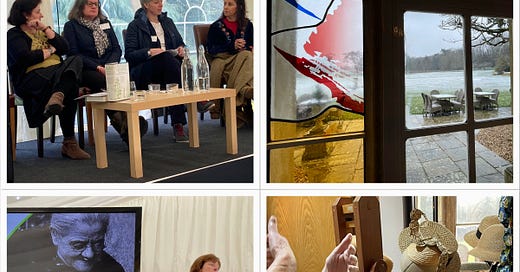Are we simply talking to ourselves?
The lives and critical importance of contributions made by the working women in this region have too often been overlooked.
For International Women’s Day (IWD), I was invited to participate in a new conference that celebrates the women who excelled in traditional crafts, skills and work found in the Chilterns Area of Outstanding Natural Beauty (AONB), where record books tell us that the development of a modern local economy was driven by the men in the furniture trade, agricultural merchants and landowning farmers.
The lives and critical importance of contributions made by the working women in this region has too often been overlooked.

Women dominate travel and tourism, either as employees or business owners, due in part to flexible and seasonal working, but in my experience, it’s the creativity, the innovation and collaborative nature of the sector that appeals to women. And it’s what we are good at. Yes?
We are also traditionally the keeper of stories and local traditions.
But are we at risk of just talking to ourselves?
I tended to take no noice of IWD, it was for other women, in other places. Until it blundered into my professional world about four years ago when a client was challenged to share the stories of women (who were either silent or unknown), who had helped shape the product’s story.
Always up for a challenge, we threw our efforts into looking for these elusive women: the biggest obstacle was the official records which record conquest, invasion, invention and the victorious. Typically male domains. Where are the records of women in history and women today?
We asked around, made phone calls, did lots of googling, visited the archives, spoke to educational colleagues and found examples of historical and contemporary women.
We found geologists telling the story of what is under our feet that has determined what is farmed and what has fed us through the ages. We found archaeologist getting their knees and nails dirty from digging out the facts and stories of our ancestors. We found conservationists, entomologists and botanists. We found historians, painters, writers, poets and tour guides. We also found a woman who herded geese.
This client has evolved their communications to better reflect their historical and contemporary communities. Have you had a similar experience?
It isn’t until I was challenged that I realised that the sense of place and stories I had been telling, were only a partial version of events. Like reading a story but leaving out half the chapters.
Who is challenging you?
Make your region more accessible by sharing the stories of those women who have walked through, participated in, dug up, cooked, studied, recorded, painted, sang, led the way or challenged the status quo.
Look for women-owned and run businesses to support, recommend to friends and family, following and sharing their content on social media, giving feedback and leaving reviews. It really helps and is appreciated. I know!
If you are a business owner, it’s important to make sure you populate your ‘about me’ page on your website with your own story.
All of this brings a richness and depth to destination and product narrative because it will accurately reflect what is there, what is local and special about you and your area.
If you are up for a challenge, I am your woman!




Well done Mary- i always enjoy reading your TTandT's ! As a female business owner your comments about collaboration, story telling and community really made sense to me. Although we have a strong online presence, it is in the Edge Store at our coffee roastery in Sussex where I feel our business really comes alive. There is nothing to compare with the visceral, rich experience of being in a place!